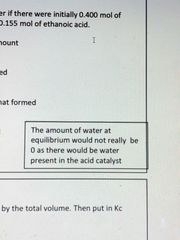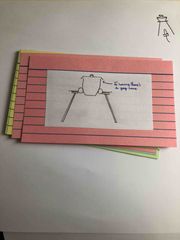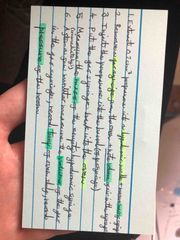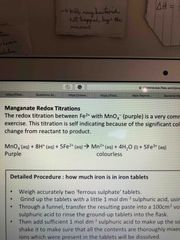![]()
![]()
![]()
Use LEFT and RIGHT arrow keys to navigate between flashcards;
Use UP and DOWN arrow keys to flip the card;
H to show hint;
A reads text to speech;
34 Cards in this Set
- Front
- Back

Front (Term) |

• |
|
|
Safety precautions if working with an oxidising chemical? |
Keep away from flammable materials |
|
|
What is a danger of working with: • dil. acids • dil. alkalis |
Both irritants |
|
|
Draw the heating in a crucible apparatus for calculating the amount of water of crystallisation in a hydrated salt. |

Back (Definition) |
|
|
What reactions do we use heating in a crucible for? |
• working out the amount of water of crystallisation • mass gain when Mg reacts with O2 • mass loss in various thermal decomposition reactions |
|
|
When using a gas syringe to measure the volume of a gas, always note down the temperature and pressure (as this affects gas volume) |
• |
|

Front (Term) |

Back (Definition) |
|
|
When diluting a solution - why is it better to use a volumetric pipette than a measuring cylinder? |
It has a smaller uncertainty. |
|
|
Never put hot solutions into a volumetric flask. Why? |
• the heat could cause the flask to expand -> the volume measured would then be incorrect |
|
|
How to make sure the volume of distilled water that is added to a volumetric pipette to dilute a solution is accurate. |
Use a dropping pipette for the last few drops |
|
|
Invert several times to ensure a uniform solution. |
• |
|
|
In experiments, before you start, wash out each piece of equipment with the solution to be used in it. Why is this important? |
•If not rinsed out: 1) could be residual water which diluted the acid/alkali leading to a larger titre 2) could be a substance in that reacts with the acid/alkali leading to a larger titre |
|
|
Touch surface of alkali with pipette - to ensure correct amount is added. |
• |
|
|
Make sure the jet space in the burette is filled with acid. |
• |
|
|
Add a few drops of indicator. Indicators are weak acids -> too much will affect the titration result |
• |
|
|
Phenolphthalein colour? |
Alkali -> pink Acid -> colourless |
|
|
Titrations Add acid drop wise at end point. |
• |
|
|
Titrations Repeats titration until at least 2 concordant results (within 0.1cm^3) |
• |
|
|
You can add distilled water to the conical flask during titration to wash the sides of the flask. Explain why this is ok? |
Won’t affect the titration • doesn’t change the number of moles of acid • doesn’t react with the reagents |
|
|
Manganate titrations are self indicating. |

Back (Definition) |
|
|
What colour is the Mn2+ ion? |
Colourless |
|
|
Describe what the solution is like that is needed in order to find out how much iron is in iron tablets? |
• grind up the tablets • make up to the solution to 100cm^3 with dil. H2SO4 • stopper the volumetric flask and invert |
|
|
Only use dilute sulfuric acid for manganate titrations. |
• |
|
|
What will be the bad thing that happens if you use insufficient volumes of H2SO4 (or use a weak acid) in manganate titrations? |
(remember the role of the H2SO4 is to supply the 8H+ ions) • the solution will not acidic enough • MnO2 will be produced (instead of Mn2+) • MnO2 is a brown ppt -> masks the colour change -> leads to a greater volume of manganate being used |
|
|
How to reduce uncertainties in measuring mass? |
• Use a balance that measures to more decimal places • Use a larger mass |
|
|
How can you ensure a more accurate measurement of mass added? |
• weigh before and after addition and then calculating the difference will ensure a more accurate measurement of the mass added |
|
|
Errors in flame calorimetry?(these are just the ones you forgot) |
• Evaporation of fuel after weighing the spirit burner • measurements not made under standard conditions - H2O is a gas |
|
|
Flame calorimetry diagram? (Remember the lid) |

Back (Definition) |
|
|
When describing how to do an enthalpy change reaction. Always add the solution first to the polystyrene cup Then add the solid on the 4th minute |
• |
|
|
When describing how to do an enthalpy change reaction. Always add the solution first to the polystyrene cup Then add the solid on the 4th minute |
• |
|
|
Enthalpy change Make sure to stir the solution constantly (before 4 minutes and after) Why is this important? |
All the solution at the same temperature |
|
|
Enthalpy change How do you know if a reaction is exothermic? |
The temperature will increase +ve ΔT |
|
|
Enthalpy change How do you know if a reaction is exothermic? |
The temperature will increase +ve ΔT |
|
|
Enthalpy change How do you know if a reaction is endothermic? |
The temperature of the solution will decrease |

